History Timeline of Bull Run Trail
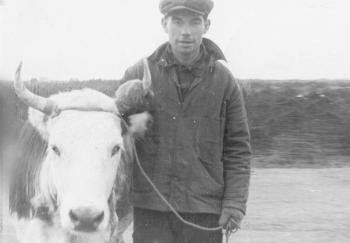
Trails for Livestock
Bull Run Trail was originally a thoroughfare for farmers to move their cattle to different areas of land where they grazed and ran free.
Photo courtesy of the family of the late Albert Naugler.
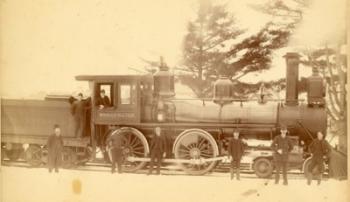
Combining Railways
The Halifax & South Western Railway purchased the Nova Scotia Central Railway for $525,000 in 1902.
Photo from Halifax & Southwestern Railway Museum website. Read more about the railway here: http://hswmuseum.ednet.ns.ca
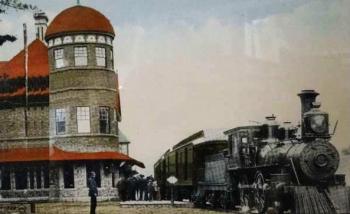
Expanding Railroad
By 1907 the railway was expanded to run from Halifax to Yarmouth and from Bridgewater to Port Wade.
Bridgewater Station postcard. Photo from Halifax & SouthWestern Railway Museum.

Bull Run - the Community
This trail's namesake, Bull Run, was named for the American Civil war, was a community about 11 miles from Bridgewater. In about 1890, the Bull Run was renamed Middleton, because it was about half way between Bridgewater and Liverpool. Later, it was renamed to Middlewood to distinguish it from Middleton, Annapolis County.
Photo: wikimedia commons.
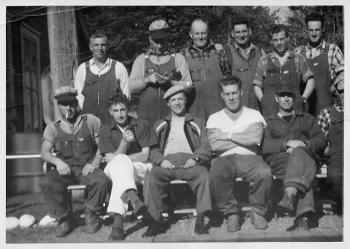
1940s - 1990s
Bull Run was a busy railway from the 1940s to the early 1990s, with two daily runs between Liverpool and Halifax and two daily runs between Yarmouth and Halifax.
Photo courtesy of Clarence Slaunwhite.
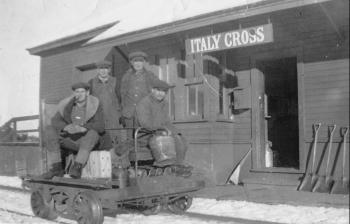
Stations
Train passengers, of this section of the railway, could board/disembark at Hebbs Cross, Italy Cross and Middlewood. There was a post office at each of these communities that received and sent mail by the train. The ice house in Hebbs Cross, delivered ice via the train cars.
Italy Cross Station. Photo courtesy of the family of the late Percy Naugler.

Section Men
The maintenance and upkeep of the track was done by “section gangs” consisting of a foreman and three workers. These groups travelled the rail bed five days a week checking and maintaining their section of the track in all types of weather.
Percy Naugler, front right, with his section gang. Photo courtesy of the family of the late Percy Naugler.

Service of Importance
In early part of the twentieth century, the railways provided the most important transportation service for passengers and freight. Travellers were stranded, freight stalled and mail stopped if trains were cancelled or delayed having immediate and serious effects on people and businesses.
Photo courtesy of Clarence Slaunenwhite.

Railway Shed
The communities of Hebbs Cross, Italy Cross, Middlewood and an area near the county line each housed a railway shed to store the motor car and tools. It was also used as a resting place for the workers.
Clarence Slauenwhite is shown here in front of a toolshed.
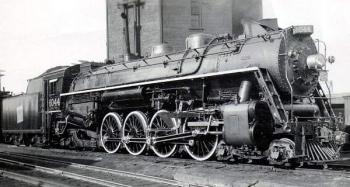
Steam to Diesel
The railroad began replacing steam engines in 1956 with diesel engines. Locally, this was accomplished in 1959.
Photo courtesy of Halifax & SouthWestern Railway Museum.

Operational Aspects
The local sidings along the Bridgewater to Queens County line were numerous and were as follows: Texaco, Imperial Oil, Atlantic Wholesalers, Blue Flame Gas Co., Kaizer, Hofert, Gulf Oil, Acadia Construction, Conquerall Mills, Hebbs Cross, Italy Cross, Middlewood and County Line.
Photo public domain.

Last Train Run
The last train to run this section of track was on June 5th, 1991, after which the rail-line was abandoned and turned over to the Provincial Department of Natural Resources.
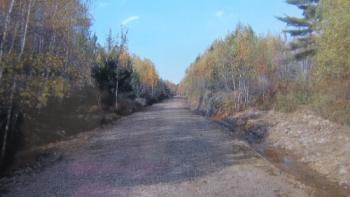
Rail-to-Trail Interest
In 2002, a number of community meetings were held to involve and inform the community of the rails-to-trails project proposal and the trail's proposed development.
Photo courtesy of Rayburne Whynot.

Public Survey
The Bull Run Trail Association completed a public opinion survey in December 2002. The Board of Directors polled 363 local community members by going door-to-door. There was no verbal opposition given to the proposed trail.

Incorporation
The Bull Run Trail Association was incorporated in January 2003 following a series of public meetings in the communities along the abandoned rail line between the Town of Bridgewater and the Region of Queens.
Photo courtesy of Rayburne Whynot.

Letters to Landowners
The Association mailed a letter of introduction to all adjacent landowners of the proposed trail to get their input and suggestions for the project in 2003.
Photo courtesy of Rayburne Whynot.
Constructing the Trail
The trail was graded, brush removed.
Photo courtesy of Rayburne Whynot.
Making Hebbville's Bridge Special
In spring of 2006, then club chairman, Clarence Slauenwhite, presented the idea of covering the bridge in Hebbville. The club financed the bridge through fundraising, funding grants and volunteer workers.
Photo courtesy of Rayburne Whynot.

Bull Run Has a First
The bridge in Hebbville is the first covered bridge in the Nova Scotia Trans Canada Trail system!
Photo courtesy of Rayburne Whynot.
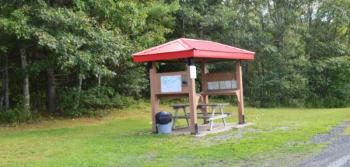
Information Kiosk
An information kiosk was built in 2006 (?) to host trail information, old photos, a trail map and a picnic table.
.
Photo courtesy of Rayburne Whynot.
Official Trail Opening
The Bull Run Association celebrated the official opening of the trail on October 14, 2006, with refreshments, food, speeches and a ribbon cutting!.
Photo courtesy of Rayburne Whynot.




